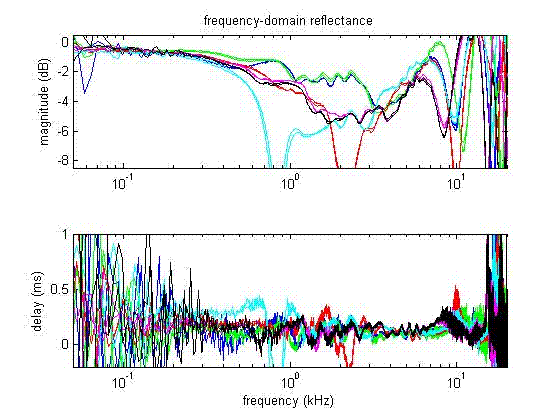
Ear-canal frequency-domain reflectance. The differences in the reflectances between ear-canals may be due to differences in the curvature of the individual ear-canals and differences in the direction of insertion of the measurement probe.
Ear-canal frequency-domain reflectance. The differences in the reflectances between ear-canals may be due to differences in the curvature of the individual ear-canals and differences in the direction of insertion of the measurement probe.
Ear-canal time-domain reflectances (TDR) calculated as the inverse Fourier transforms of the frequency-domain reflectance. Lines with the same color compare measurements from two sound sources. The reflectances are smooth and there is agreement between the reflectances of the two sound sources. Both effects are due to signal processing. The largest peak value of TDR is between 0.16 and 0.18. This peak may indicate mobility of the eardrum, while the second peak (occurring about 0.13 ms after the first) may indicate mobility of the stapes. The circle denote the reflection round-trip delay
Ear-canal diameter inverse solution. Lines with the same color compare measurements from the two sound sources. The entrance to the ear-canal corresponds to x= 0. The circle denote the reflection distance, which is the same as the position of the eardrum.
![]() Boys
Town
National
Research Hospital
Boys
Town
National
Research Hospital
Communication Engineering Laboratory